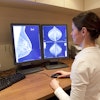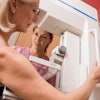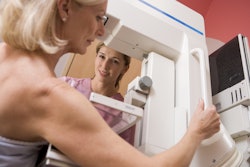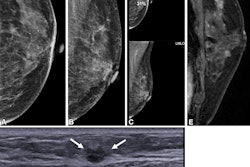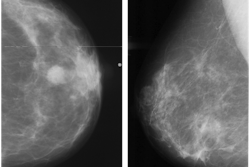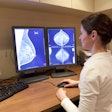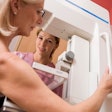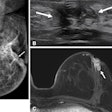More women are willing to have AI assistance for their breast cancer screening exams, suggest findings published April 18 in Radiology: Imaging Cancer.
A team led by Bersu Ozcan, MD, from the University of Texas Southwestern Medical Center in Dallas found that about seven out of 10 surveyed women approve of AI’s use during screening mammography exams as a second reader, with most survey respondents not accepting the technology as a standalone reader.
“They want AI to assist, not replace, the human reader,” Ozcan told AuntMinnie. “Breast imaging departments can use this insight to guide how they introduce AI, focusing on integration that maintains radiologist involvement and emphasizes transparency, reassurance, and patient-centered communication.”
While AI tools continue their surge into clinics, researchers continue to evaluate patient perceptions toward the technology. Previous studies suggest that many women welcome AI in their breast cancer screening exams, as well as pay for AI-assisted reading if it helps boost results. They also suggest that women with a higher degree of education are more willing to accept AI into their imaging exams.
Ozcan and colleagues assessed patient perceptions of AI’s use for interpreting screening mammograms. They also collected patient information such as age, race and ethnicity, education, income level, and history of breast cancer and biopsy.
The prospective survey study included complete responses by 518 women who underwent mammography exams in 2023. Of the total women, 377 fell in the age range of 40 to 69 years, 347 were at least college graduates, and 262 were non-Hispanic white.
The team reported the following:
- 76.5% of surveyed women reported having no or minimal knowledge of AI.
- 71% preferred AI to be used as a second reader while 4.44% accepted the technology as a standalone reader.
- After an AI-reported abnormal mammogram, 88.9% requested radiologist review versus 51.3% of radiologist recall review by AI (p < 0.001).
- More participants would undergo diagnostic exams for radiologist recalls compared with AI recalls in cases of discrepancy (94.2% vs. 92.6%, respectively). However, this finding did not achieve statistical significance (p = 0.2).
Higher education was significantly linked to higher AI acceptance by the surveyed women, with an odds ratio (OR) of 2.05 (p = 0.002).
The team also reported significant associations between race and AI acceptance. Hispanic women and non-Hispanic Black women who were surveyed expressed more concern for AI bias compared with their non-Hispanic white counterparts (OR, 3.32 and 4.31, respectively; p = 0.005 for both).
Ozcan said incorporating patient perspectives into AI implementation strategies ensures that these technologies improve and do not hinder patient care. This fosters trust and adherence to imaging reports and recommendations, she added.
Ozcan and colleagues are working on follow-up studies to better understand how to improve trust in AI across diverse populations.
“This includes developing patient education tools that explain how AI works, its limitations, and how bias is being addressed. We’re also exploring how patient attitudes shift when AI is introduced in different clinical settings, like diagnostic versus screening environments,” she told AuntMinnie. “Our goal is to ensure that AI implementation is equitable, effective, and centered around patient needs and values.”
The full study can be accessed here.


